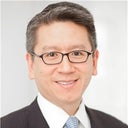Hi westsider,I don't perform lateral platysmaplasties with my necklifts. I think I may be the exception. I do have a reason for doing this. I rely on the anterior or corset platysmaplasty in the middle to smooth the bands and create an improved profile on the neck. Instead of pulling on the lateral platysma on the sides to help support the necklift, I suspect that the lateral platysmaplasty may actually cause the neck to fall. Since the neck skin is being pulled back with the lateral portion of the platysma muscle, if the suture which is holding the platysma muscle back fails or cheesewires through the tissues, then the platysma will return to its more natural position. Along with that return or snap back of the platysma muscle is the skin which was not fully released with a lateral platysmaplasty type necklift. Unless the patient has a fat submental area or excess fat under their chin, I try not to perform any liposuction. I worry that fat removal can worsen the crepiness of the skin under the chin. Instead I try to keep a reasonable thickness of fat on the skin and if possible peel the skin and fat directly off of the platysma to keep that as thick as possible, but not double chin levels of fat (of course.) The corset platysmaplasty is performed to tighten the front of the neck and improve the profile as much as possible. Then the facelift is performed on the sides of the face which free the skin on the side and this skin "freeing" is connected to the skin that was freed under the chin. Now the skin under the chin is completely free to be tightly gift wrapped under the chin and along the upper neck. The skin is push up vertically to make sure the under chin area is as snug as possible after SMAS tightening, and the incision behind the ear, and possibly into the hairline allows for a nice skin removal in the posteriorly.In general without placing lateral platysmaplasty sutures anchored to the back of the ear area (mastoid are) my patients do not experience any choking or noose like sensation. In 2006, I was performing the lateral platysmaplasty, and my patients did have a temporary stiffness and nooselike sensation, which lasted 4-6 weeks. This feeling would go away. In one of my follow ups, one patient noted that they felt something snap, and their stiffness and noose sensation went away with that snap. This particularly observant patient also noted that the front of the neck fell and the skin tightening in the front all came down in that same "snap." Had I not listened carefully to my patient's feedback, I may not have noticed this pattern. Soon after I mainly was performing corset platysmaplasties, and at some point simply stopped with the lateral tightening.If you look at my results, there is no 4-6 week let down and the neck stays up, even without the lateral tightening. The bonus is that they don't feel the noose sensation or stiffness. The main discomfort is tightness directly under the chin in the neck to chin junction. Please follow the link to Falling Necks, Pixies Ears and Thick Neck scars for my original web article in 2007 based on my experience with the lateral platysmaplasty.Best,Dr. Yang





